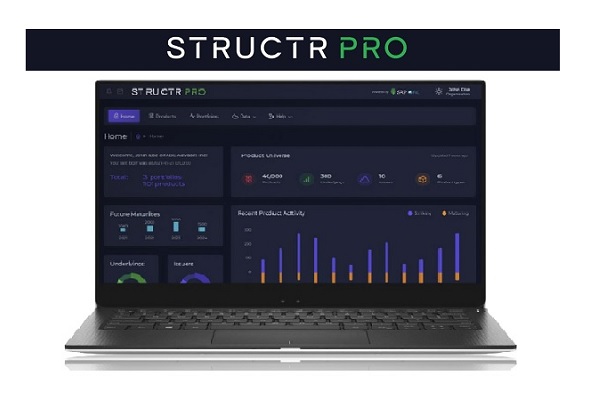Exchange Traded Funds (ETFs) are one of the top five asset classes for the US structured product market striking this year. Ahead of them are various flavour of equities including indices, shares and share basket (source: www.structuredretailproducts.com). The most popular and widely used ETFs typically aim to track the performance of a benchmark index which is usually also used directly as a product underlying.
Usage in the US market
Table 1: Index and corresponding ETF data for four popular ETFs used as underlyings for structured products in the US market for 2023.
| Product Issuance | Sales Volume (USDm) | One year historic volatility | Correlation to index/ETF by pair | |
| S&P 500 | 2572 | 10143.96 | 0.2149 | 0.9992 |
| SPDR S&P 500 ETF Trust | 151 | 989.81 | 0.2171 | |
| Nasdaq 100 | 165 | 626.19 | 0.2649 | 0.9998 |
| Invesco QQQ Trust Series 1 | 61 | 559.06 | 0.2636 | |
| MSCI EAFE | 76 | 267.37 | 0.1861 | 0.9422 |
| iShares MSCI EAFE ETF | 30 | 49.26 | 0.2065 | |
| MSCI Emerging Markets | 32 | 94.25 | 0.1677 | 0.926 |
| iShares MSCI Emerging Markets ETF | 22 | 31.09 | 0.1944 |
Table 1 shows four ETFs commonly used as underlyings in the US market. The table shows product issuance and sales volume data for the ETFs themselves and the indices they aim to track. This information is for products linked solely to the underlying and does not take include basket or worst-of products. The largest ETF in US market is the SPDR S&P 500 ETF Trust. This ETF is designed to track the S&P 500 index which is the most popular US underlying for structured products. The correlation between the two assets is over 99.9%,and the one year historic volatilities of the two underlyings are very similar at 21.71% (ETF) and 21.49% (index).
The second most popular ETF to use as an underlying by structured product issuers is the Invesco QQQ Trust Series 1 which tracks the Nasdaq 100 index and like the S&P 500 pair this ETF has a very high correlation to the index and similar historic volatilities.
Alternative choices
The remaining two index/ETF pairs are examples of MSCI indices and iShares ETFs based on them. These have much lower levels of product issuance and sales although are still very frequently used both as single underlyings and as part of a basket. In both these cases the correlation whilst high is not as close as for the first two. The historic volatilities also differ by enough to suggest differences in the underlyings caused by replication, currency effects and different market closing times. This is interesting in terms of structured product underlyings as the greater the difference between the ETF and the Index the more likelihood that there is variation in product returns and outcomes.
StructrPro can be used to analyse a portfolio of product taken from the US structured product market. For the following analysis all products linked to the SPDR S&P 500 ETF Trust either in a basket or as a single underlying were analysed. This analysis includes both live and matured products from the SRP database using analytics powered by FVC.
The most popular product type linked to this underlying is the income autocall with over 81% of products falling into this category. Approximately 57% of products in this set are linked to the SPDR S&P 500 ETF Trust and at least one other underlying.
ETFs are directly investable assets unlike the indices they track. This can mean that an ETF linked product is easier for the issuer to hedge and risk manage. However, the indices in question are so large and popular and that any issuer will have a large trading book with the associated economies of scale.
For the investor the advantage a product linked to an ETF will depend on whether the product on offer is more appealing due to the structure or terms. It is no surprise that ETFs that track the benchmarks of the S&P-500 and Nasdaq-100 are the two most popular in the US market.
Tags: Product typesA version of this article has also appeared on www.structuredretailproducts.com
Image courtesy of: Jonathan Roger / unsplash.com













